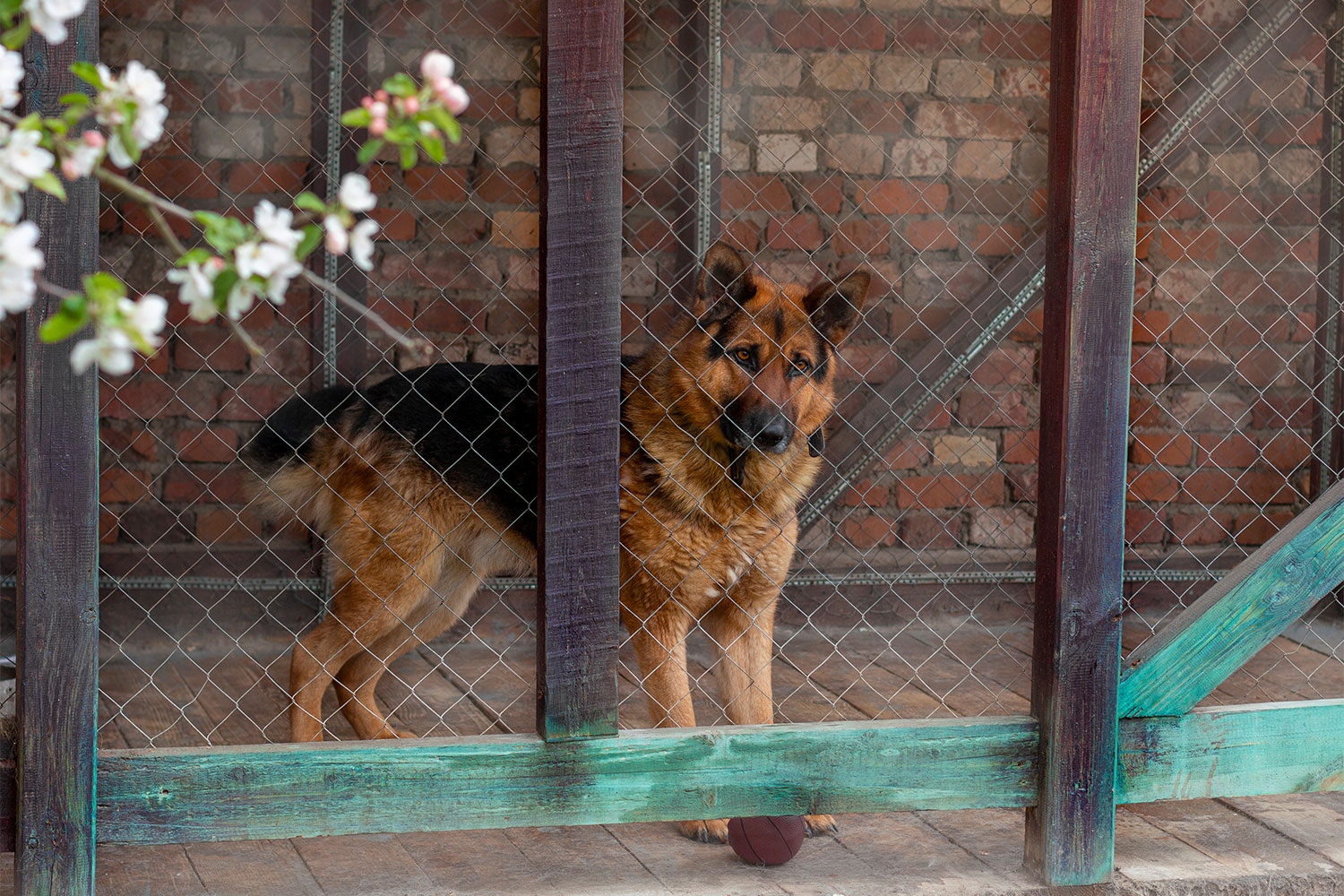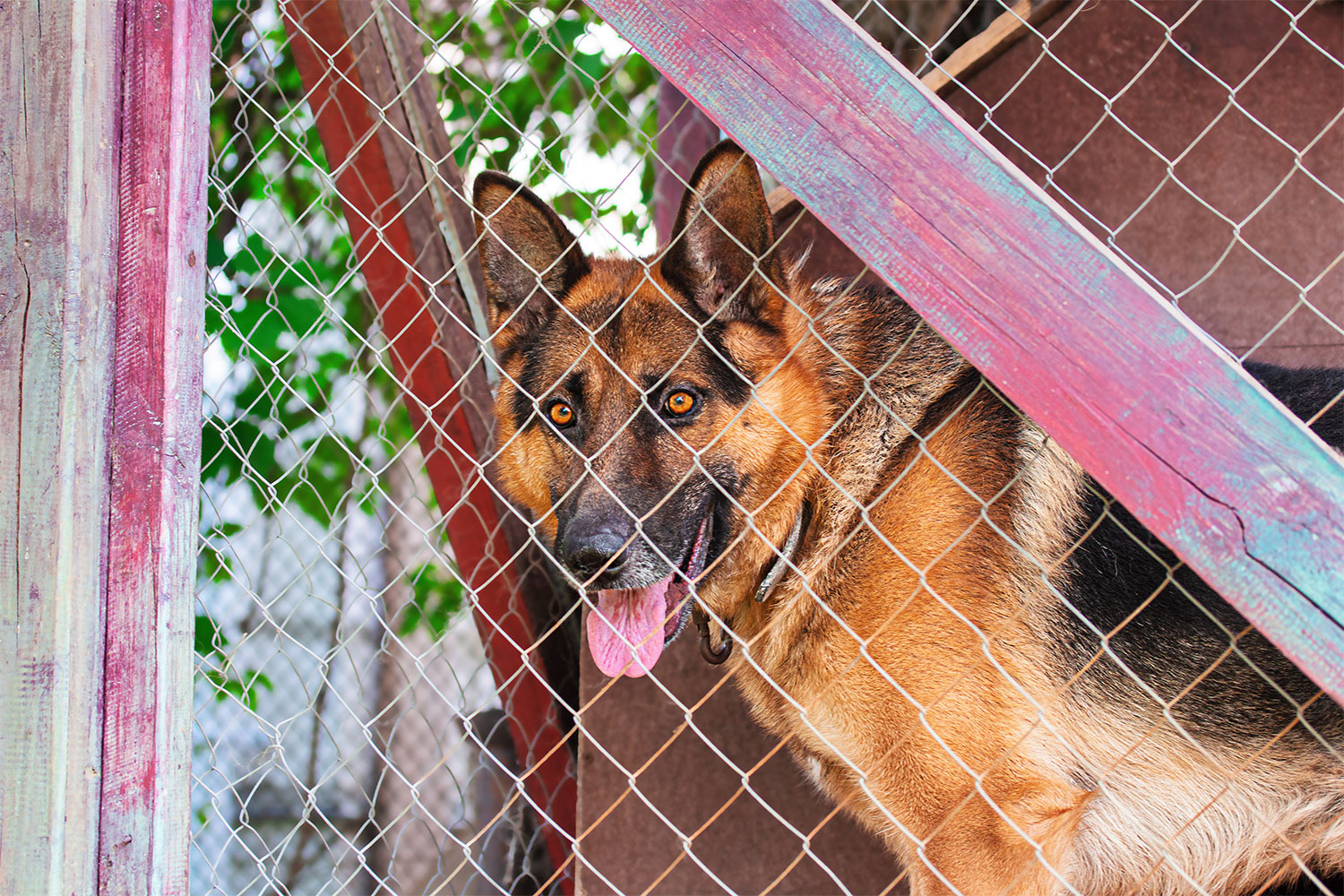If you’ve been fetch-training your dog for half an hour every day, that’s not enough, as they need more exercise than that. The average adult dog needs at least an hour of exercise daily. Herding or sporting dogs need up to two, so keep your fur baby healthy with a safe space to work out. A dog run might also be your pet’s second home when you’re away at work. Follow our guide on how to build a dog run on the side of your house to help make your project a success.
What is a dog run?
A dog run is essentially a mini park, an extra sleeping area, a hang-out spot, and an exercise pen for your pet. Safely enclosed by pet-friendly fences and accessible by a swinging, pet-proof door, these areas give your dog a space to call their own. Some dog runs are outfitted with faux grass while others are covered in wood chips. Others simply feature the existing ground cover like natural grass or garden stones, but the choice is ultimately yours.

If you’re away from home most of the day, but can’t leave your dog indoors, a dog run is a smart solution. Of course, make sure the area you choose provides protection against the weather, and provide a dog house if necessary. Keep a bowl of cold water available at all times, and install an automatic dog feeder if you’re home well past dinnertime.
Now that you’re familiar with a dog run, here are some materials you’ll need.
What supplies do I need to build a side yard dog run?
The materials you need depends on what your vision is for your dog run. Here are some ideas and starting points to consider.
- Choose your ground material. Popular choices include wood chips, gravel, synthetic grass/pet turf, natural grass, dirt, concrete, or garden stepping stones.
- Choose your fence type. Chain link fences are by far the most popular and easiest to install. Other top contenders are livestock fencing, wood, and plastic wire.
- Are you adding a dog house? Whichever material you choose, keep the dog house/kennel at the end of your dog run to keep it out of the way.
- Are you adding any special, interactive features? Some pet parents install special features like climbing structures, tables, and even splash pads.
- Are you building shade? Shade is important to keep your four-legged friend out of the sun. Retractable awnings, sun shades, or DIY shades are equally effective.

How big does my dog run need to be?
Pet experts recommend building a dog run that’s at least four 4 on one side and 8 feet on the other. Adjust as needed for your dog’s size. Multi-pet homes should build their dog run slightly bigger to give dogs enough room to play and race.
As for fence height, consider installing ones that are at least 8 feet tall. This prevents agile and nimble dogs from making an escape. However, most smaller breeds will be just fine with shorter fencing. For more details on how to properly install fences, let’s move onto our building manual.
How do I build a dog run on the side of my house?
Since chain link fences are the most popular dog run enclosure choice, our instructions will focus on this material. You’ll need a shovel, the appropriate number of chain link panels, posts and fasteners, a gate, a shovel, your ground cover, basic gardening tools, measuring tape, and roof materials.
- Measure your dog run space and mark where the fence posts will go.
- Clear or clean the ground, and apply your cover.
- Dig the holes for your posts and ensure they’re up to 2 feet underground. This is protection against pets who love to dig and escape.
- It also helps stabilize your fencing.
- Put up the chain-link fence and mount the gate. Double check the structure’s integrity and the gate’s security.
- Install your preferred roof type.
- Jazz it up with an outdoor dog house, toys, and other elements.
- Introduce your dog to their new stomping ground.
A dog run provides your dog with a comfortable area to play, exercise, sleep, and lounge. If frequent trips to the dog park are no longer viable because of schedule changes or new circumstances in your household, a dog run will keep your pet plenty active. Whichever materials or style you choose, your dog will have a blast spending time outdoors every day.
Editors' Recommendations
- 5 surefire ways to keep your dog off your bed and get a good night’s sleep
- Are ‘dog years’ really 7 human years? How to calculate your dog’s age
- Taking your dog’s collar off at night: Safe move or safety risk?
- Looking for signs your dog has ticks? These telltale symptoms mean you have a flea or tick problem
- Xylitol is dangerous for dogs: 10 surprising products that contain it as a hidden ingredient



